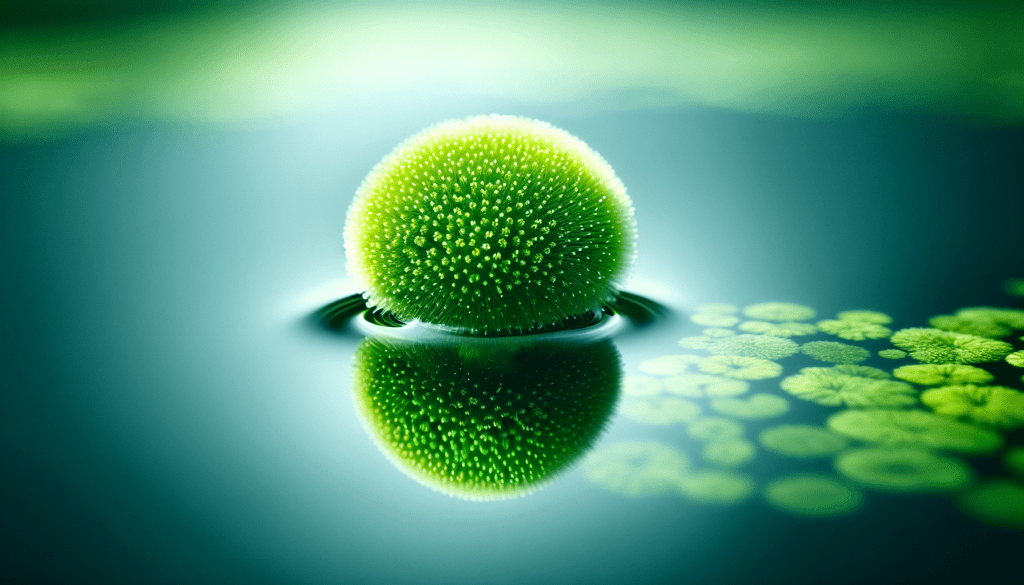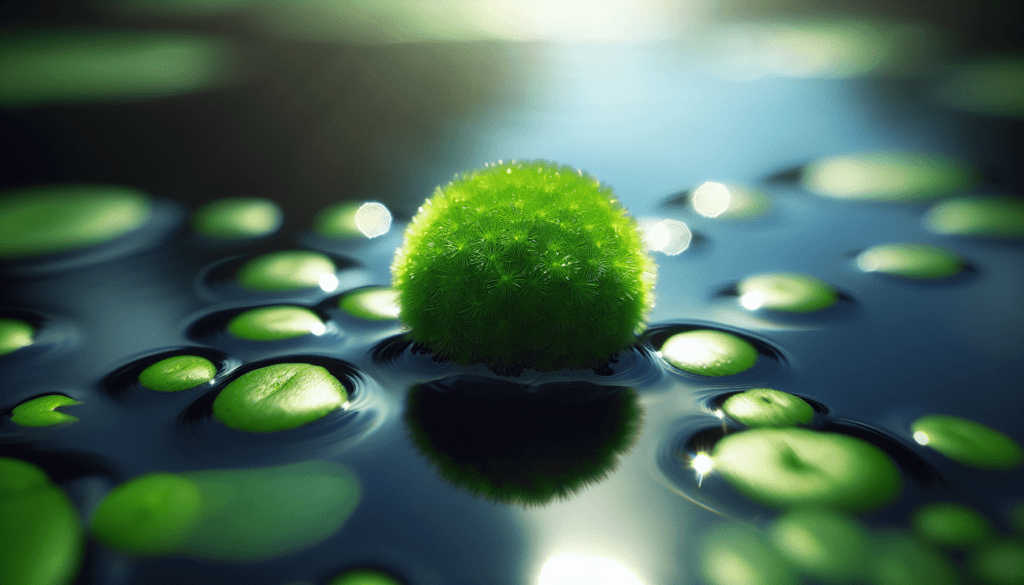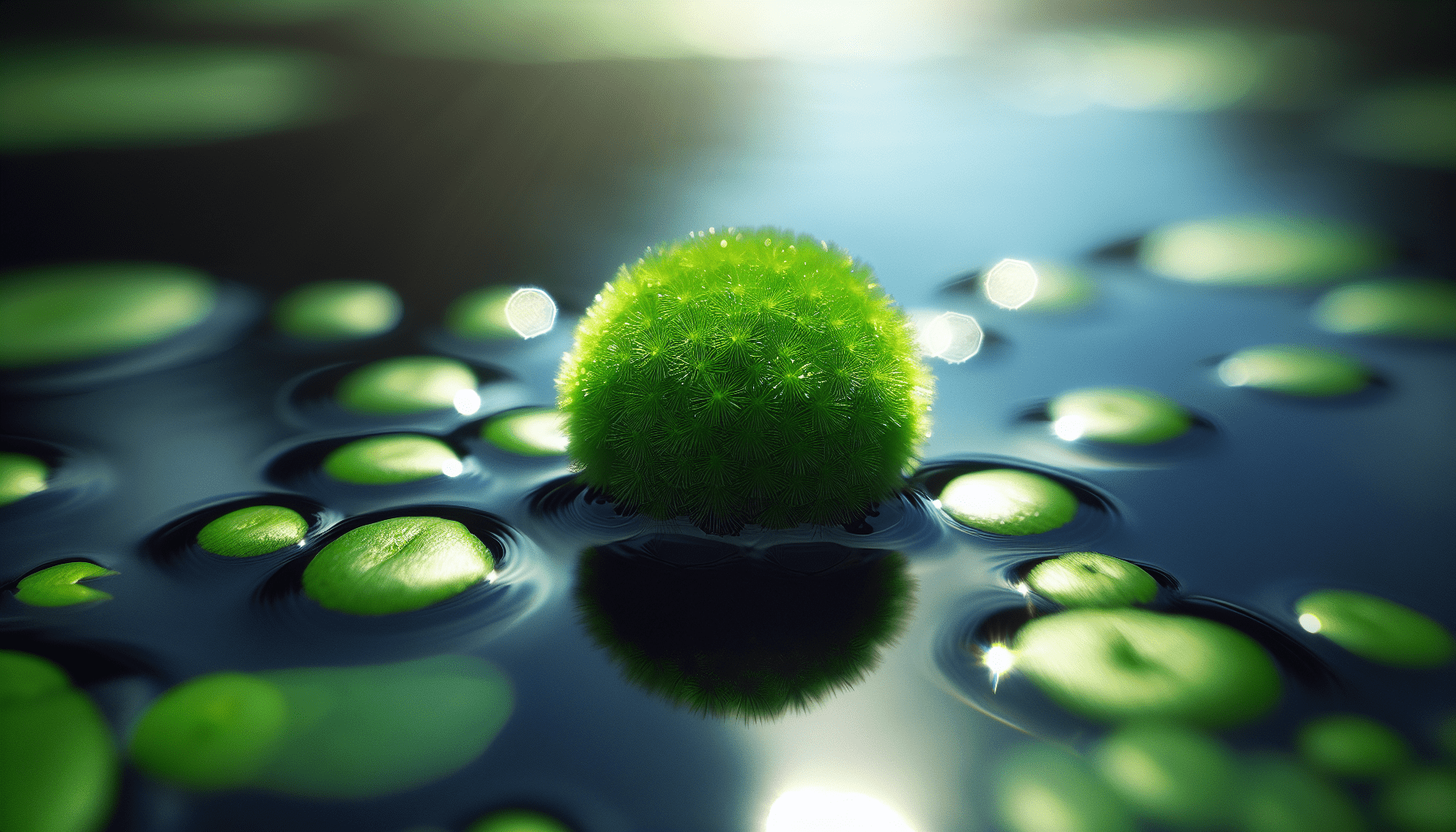In the exploration of aquatic flora, one would be remiss to overlook the fascinating rank of Wolffia, commonly known as watermeal or duckweed. Tiny yet tenacious, Wolffia is intriguing for its capacity to flourish in various conditions, its biologically striking traits, and its potential implications for environmental conservation and innovative agricultural practices. This article offers a comprehensive overview of this aquatic plant, illuminating its peculiar characteristics, notable species, ecological impacts, as well as its advantages and limitations for human purposes. Prepare to embark upon a journey towards a deeper understanding of nature’s microcosm – the aquatic weed, Wolffia.

Identification of Wolffia
Wolffia is an intriguing aquatic plant species that falls under the duckweed family. They are commonly referred to as watermeal and standout as the smallest flowering plants globally.
Physical characteristics of Wolffia
These aquatic plants generally contain a pair of leaves that have evolved into an inflated structure and are devoid of roots. The size of Wolffia is comparably minuscule, often measuring less than a millimeter long. If you were to view them, you’d note their oval or oblong appearance, with a texture akin to that of a grain. Despite their minute size, they remarkably possess the ability to flower, although such instances are rare.
Variations among species
Across the globe, there are approximately 11 acknowledged species of Wolffia. The diversity among them manifests primarily in their size, shape, and buoyancy-related attributes. Some species adopt an elongate or linear form, while others may resemble a plump sphere. Multiple species may coexist in a single water body, contributing to the habitat’s biodiversity.
Habitat preferences
Given their aquatic nature, Wolffia thrives in calm, nutrient-rich, and warm freshwater environments. They are often found in lakes, ponds, marshes, and slow-moving rivers. Wolffia prefers locations with minimal agitation to proliferate since they float directly on the water surface.
Growth and Reproduction of Wolffia
Wolffia life cycle
The life cycle of Wolffia involves rapid growth and propagation. Without the need for traditional roots, they possess unique adaptive features to flourish while being afloat. Under optimal conditions, these species can double their population in a remarkably short period, which is about two days.
Adaptive features for floating
The absence of roots provides Wolffia with excellent floating abilities. Instead, they have smooth and flat bodies with a jelly-like outer layer that aids buoyancy. This allows the plant to effectively absorb nutrients directly from the water through all parts of its body.
Reproductive strategies
Reproduction in Wolffia commonly occurs asexually, where each individual plant forms a daughter plant within its body. This bud separates from the parent plant once it matures, contributing to the proliferation of the species. Rarely, sexual reproduction may occur, where it produces the smallest known fruit.
Distribution of Wolffia
Global distribution patterns
Wolffia species have been found in various regions, from the tropics to the temperate zones. These species are widespread across many continents, including Europe, Asia, Africa, America, and Australia.
Factors influencing Wolffia distribution
Distribution of Wolffia is majorly influenced by specific environmental factors. The plant’s preference for warm climates and nutrient-rich calm waters significantly determines their distribution. Transportations via waterfowls and human activities also contribute to their geographic dispersion.

Ecological Role of Wolffia
Role in aquatic food chains
Despite their small size, Wolffia plays a vital role in aquatic food chains. These rapidly multiplying plants serve as a valuable food source for waterfowl and fish. Due to their high protein content, they can support a large biomass of various organisms.
Impact on water quality
Wolffia plays a critical role in influencing water quality. As a form of phytoplankton, they help in the process of oxygenation and removing excess nutrients from the water.
Interactions with other aquatic species
There exist different ways Wolffia interacts with its aquatic community. On the one hand, it provides a great habitat for various species, notably micro-invertebrates. On the other hand, their fast growth rate can be detrimental when it covers the water surface, depriving the water column of light and oxygen.
Human Uses of Wolffia
Use in traditional medicine
Historically, Wolffia has been applied in traditional medicine due to its high nutrient content. It has been used for treating ailments such as fever and liver problems in some cultures.
Role in aquaculture and aquaponics
Due to its rapid growth rate and high protein content, Wolffia has been extensively utilized within aquaculture and aquaponics system. It can serve as feed for fish and help in nutrient cycles within these closed systems.
Use as a food source
In some regions, particularly in Southeast Asia, Wolffia is a popular food source. The species Wolffia globosa is harvested and eaten fresh or cooked due to its high protein and nutrient content.
Cultivation and Harvesting of Wolffia
Growing conditions
Wolffia can be grown in a variety of containers, ranging from small dishes to large ponds. Since they flourish in nutrient-rich water, adding a small amount of liquid fertilizer aids their growth. They also prefer a stable and warm environment to thrive well.
Harvesting techniques
Wolffia can be harvested via simple techniques such as using a sieve or hand-netting, while ensuring a small population is left as a starter for the next harvest.
Challenges in cultivation
The cultivation of Wolffia is faced with some challenges, such as maintaining a balanced nutrient availability and limiting algal growth, which competes with Wolffia for resources.
Challenges Posed by Wolffia
Invasive potential and impacts
Wolffia species can become invasive under certain conditions, often leading to issues like disruption of native ecosystems and degradation of recreational facilities.
Techniques for controlling Wolffia
To manage this potential menace, techniques such as herbicide application, manual or mechanical removal, as well as biological control using specific fish species are often employed.
Effect of environmental changes on Wolffia growth
Environmental changes like variations in nutrient availability, temperature, and light conditions can significantly influence Wolffia growth, sometimes leading to a sudden surge in its population.
Wolffia as an Indicator Species
Wolffia as an indicator of water quality
Wolffia’s need for nutrient-rich water makes it a natural bioindicator of water quality, with their presence typically indicating high nutrient concentrations in the water body.
Response to pollutants
Wolffia’s susceptibility to pollutants and toxins can help in identifying the presence of hazardous substances in the water body.
Role in monitoring aquatic ecosystems
The growth and distribution pattern of Wolffia in a water body serve a critical role in providing information about the health of the aquatic ecosystem.
Scientific Research and Discoveries on Wolffia
Historical knowledge of Wolffia
Since Wolffia species were first described in scientific literature, much has been discovered about their unique adaptations and how they fit into their aquatic ecosystems.
Recent research findings
Recent research has brought attention to the plant’s potential in wastewater treatment and as a sustainable food source, all due to its rapid growth rate and nutrient-dense composition.
Future directions for research
Moving forward, scientific research is needed to extensively understand the plant’s unique properties and how they can be leveraged for various human purposes, while managing their potential invasiveness.
Myths and Misconceptions about Wolffia
Common myths about Wolffia
Common myths surrounding Wolffia often pertain to its invasiveness, which leads many to consider it as a mere pest. Some also mistake its growth surge as an indication of polluted water.
Scientific corrections to these myths
In scientific reality, Wolffia’s rapid growth is indicative of nutrient-rich not necessarily polluted water. While it can become invasive, this usually happens when there is an imbalance in the ecosystem that needs addressing.
Impacts of misinformation
Misinformation about Wolffia can lead to unnecessary and futile efforts to eradicate these plants, instead of leveraging their ecological or nutritional potentials. Therefore, it’s critical to promote accurate knowledge about this unique genus.
